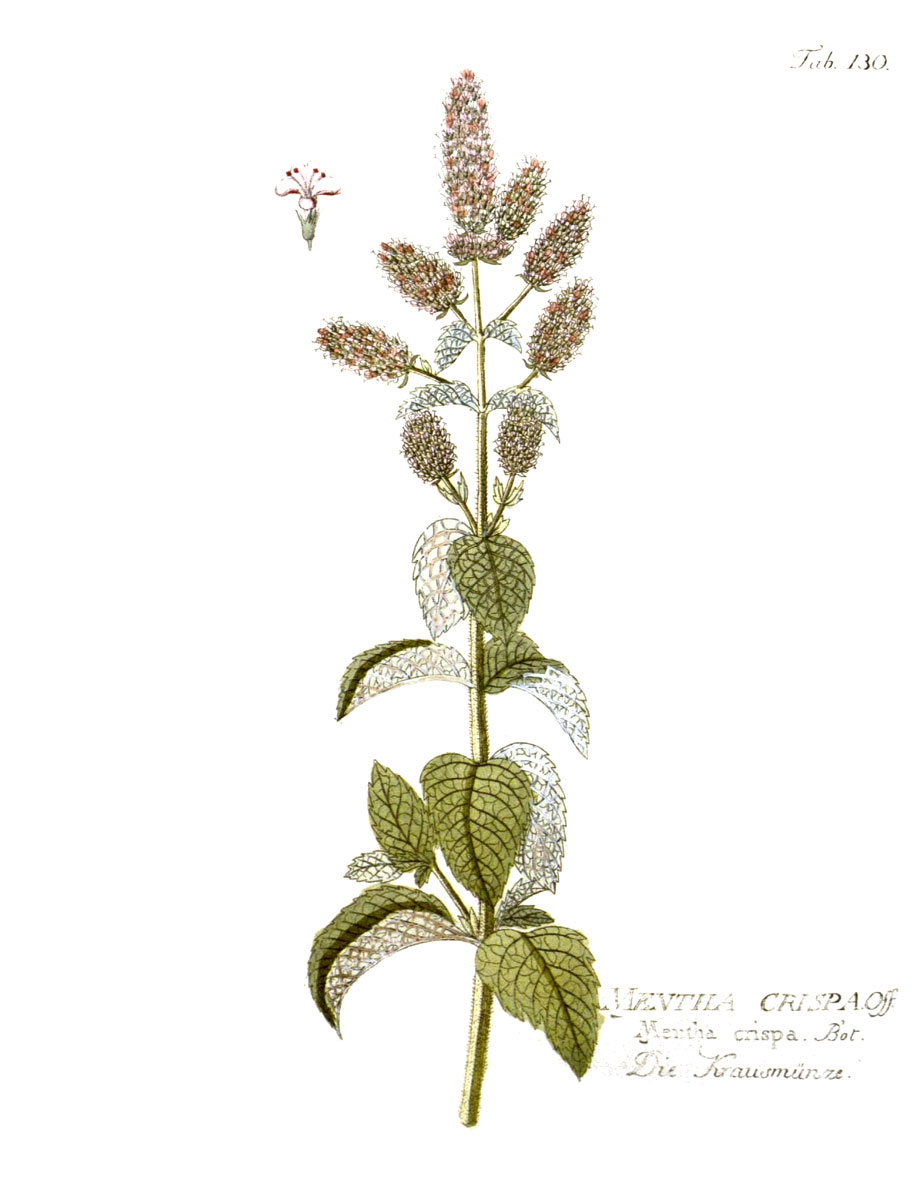Mint

Origin: Europe, Africa, Asia, Australia, and North America
Family: Lamiaceae
Subfamily: Nepetoideae
Tribe: Mentheae
Scientific Name: Mentha spp.
Selected Varieties:
- Pennyroyal: Mentha pulegium
- Peppermint: Mentha piperita
- Spearmint: Mentha spicata
Magical
Element: Air
Day: Wednesday
Planet: Mercury
Zodiac: Gemini
Deities: Demeter, Hades, Menthe, Pluto, Zeus
Parts used: Leaves
Magical Properties: Protection, healing, purification, prosperity, love, travel
Substitutions: Sage
Magical Uses
- Keep mint in the home for protection.
- Carry mint to protect against the evil eye.
- Stuff a poppet with mint to aid with digestive/stomach problems.
- Cleanse evil from a space by asperging salt water using a bundle of fresh mint, marjoram, and rosemary.
- Use mint in prosperity and money workings: Keep a few leaves on your person to aid with business deals, or in your wallet to attract money.
Botanical
Mentha contains 13-24 distinct species, whose native range includes most continents (excluding South America and Antarctica). As these species hybridise extremely readily, with hundreds/thousands of described taxa, and over 3,000 names recorded (mostly synonyms and illegitimate names).
Type: Herb
Plant Height: 10-120cm
Spread: Indeterminate
Stems: Square, erect stem, with above-ground runners
Leaves: Opposite, oval-to-lance-shaped, often downy, with serrated edges
Flowers: White-to-purple in false whorls/vertical spikes
Fruit: Nutlet with 1-4 seeds
Etymology: Both ‘mint’ and the genus name ‘mentha’ derive from the Greek Minthe, the name of a nymph associated with the river Cocytus, who was transformed into the plant in the myth of Hades and Persephone.
In the Garden
Type: Perennial
Sow: Spring
Light: Partial shade
Water: Keep moist
Soil: Rich
Companion Planting: Plant near roses to deter aphids.
Tips:
- Mint is more effective grown from cuttings or division than seed.
- Mint is famous for overtaking gardens if grown in the ground - to prevent this, grow in pots, or be sure to plant into a bottomless container extending at least 30cm underground and slightly above, so that only above-ground spread needs to be actively managed.
- If planting multiple types of mint, be sure not to plant them near each other, as this tends to result in them losing their individual flavours/scents.
